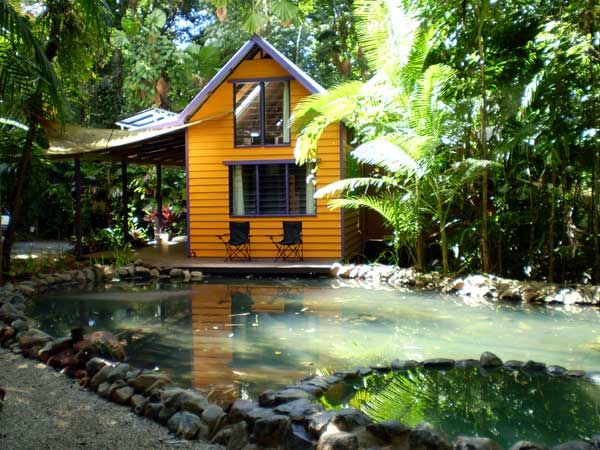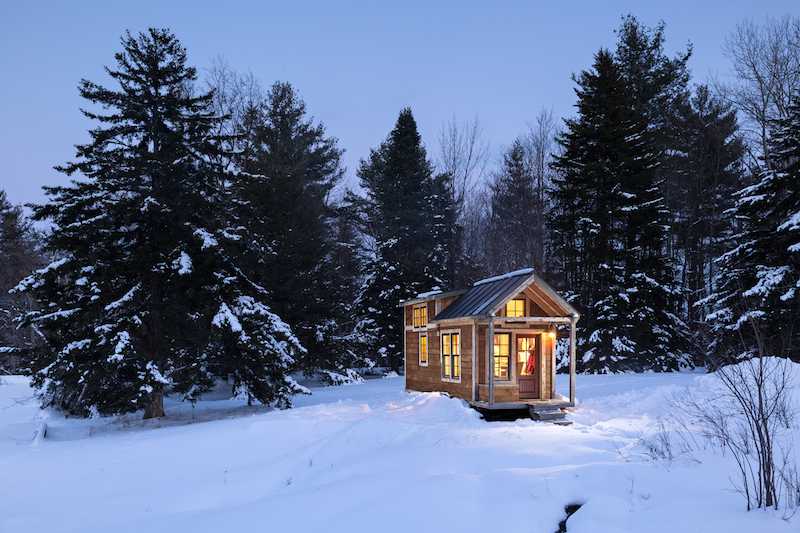17 Sep The 3 Must-Know for A Weather-Ready Tiny House
No matter if you plan to keep your tiny home parked or to hit the road and travel with your tiny, you should be prepared for all kinds of weather. From natural disasters to climate changes and drastic temperature drops, tiny houses are prone to a barrage of beatings from various weather considerations. Here are some must-know tips to keep your tiny weather-ready.
Remember the 3 W’s.
Water
 Put on Your Skirt
Put on Your SkirtThis material can be purchased as nylon, banner material, or hard foam from a local hardware store. The material doesn’t matter as much as simply providing a barrier from the wind and cold whipping under your house during winter. Ensure you are finding something windproof and you can even consider repurposing old election banners, wood scraps, or other materials to save on cost. Tire Covers
If you plan to remain parked, as many do during cold weather, be sure your tires are chocked, covered in a weather-resistant material, and driven onto blocks and elevated off the dirt and grass to prevent dry-rotting from weather exposure.
Wind
Backup GenerationWhen all else fails and the winter weather is harsher than expected, a backup generator is always a good idea. While these may not allow you to run all of the appliances within your tiny house, they will keep the essentials operational as long as you have gas on hand to keep it running. Window Panes
According to Moving.com, “Double pane vinyl or wood-framed windows are said to reduce energy usage by as much as 24% in cold climates during the winter and up to 18% in warm climates in the summer when compared to single pane windows.” Additionally, these are an incredibly cost-efficient upgrade if you plan to move your tiny house on the road, or change climates as they are much safer traveling as well as better at keeping out moisture which can cause mildew and mold in your tiny house.
Winter
 Window Insulation
Window InsulationCovering your windows with an insulated material such as solar shades or even a heavy drape can provide an extra layer of protection from the cold. While most tiny homes do offer double paned windows, because of the tendency to use more windows to allow for natural light to open up the home, it reduces the ability to keep the house insulated. If you plan to live in a chronically cold climate, opting for triple paned windows is probably the best investment. Propane Preparation
Much like our natural instinct is to cover up when it gets cold, our propane tanks need covering as well. You can purchase propane blankets in the $80-$400 range, depending on your average climate and temperatures. Avoiding this precaution can cost hundreds or even thousands of dollars in frozen propane lines and propane heated water tanks. Heated Hoses
When running your water hook up to an outside source, it is crucial to use a heated hose or insulate your potable drinking hoses with electric heated tape. This allows the lines to remain open and unfrozen by the outside temperatures, even when the physical hose is buried in the snow. Without this investment (usually ranging from $50-$300, depending on hose length), you can endure frozen hose lines and pipes and lack of water to your tiny. Warming Tanks
Whether your tiny is off grid or simply capable of boondocking, if you have black and/or gray water holding tanks, you need to be sure you remember to winterize and protect them against the freezing temps of the season. Some opt for a heat lamp under their tanks to prevent them from freezing. It must also be considered how you will drain your tanks when the temperature drops so if you are digging a drain line, be sure to plan ahead to be able to dig beneath the permafrost line.

Sorry, the comment form is closed at this time.